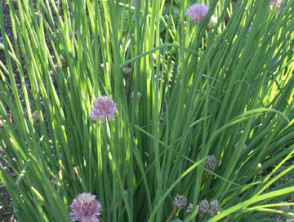| Common name: | Chives |
| Botanical name: | Allium schoenoprasum |
| Family: | Chives belong to the genus Allium. They are part of the Amaryllidaceae family, which includes many important vegetables and herbs such as onions, leeks and garlic. |
| Origin: | Originally growing wild in northern Europe, Greece, and Italy they are now grown all over the world. |
| Description: | Bulbs with edible bases and long narrow fleshy leaves. |
| Uses: | There are over 500 types of Allium, some edible, some strictly ornamental. Chives are used to decorate food, and are often added to salads. |
| Allergens: | Chives contains diallydisulphide and possibly allicin, which are known contact sensitisers. |
| Allergy: | Allium contain sulfur compounds that gives them their "oniony" taste. Ancient civilizations were familiar with chives, but claims that chives "send up hurtful vapours to the brain" fortunately are unfounded! Muslim legend has it that when Satan left the Garden of Eden garlic sprang up from his left footstep and onion from his right! Cases of allergic contact dermatitis and urticaria have been reported from handling chives. However, the risk is very low. The allergen is probably denatured when cooked. |
| Cross reactions: | Other allium spp, including garlic and onion. |
| Other information: | |
| Patch test: |
